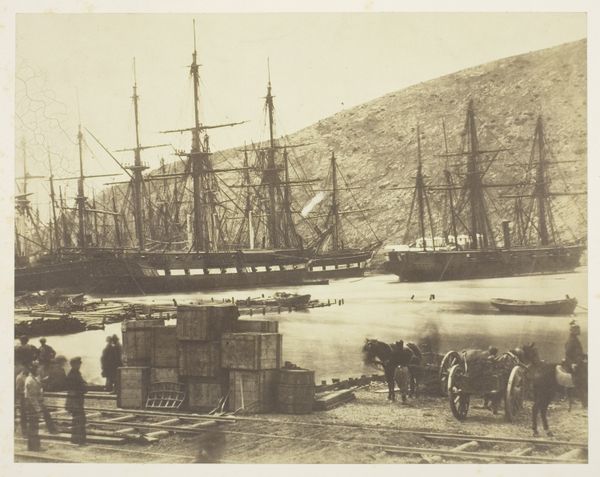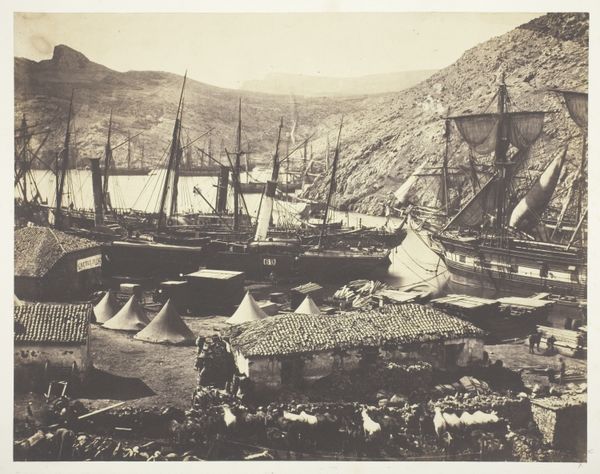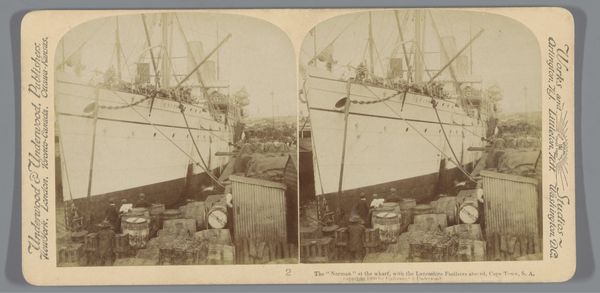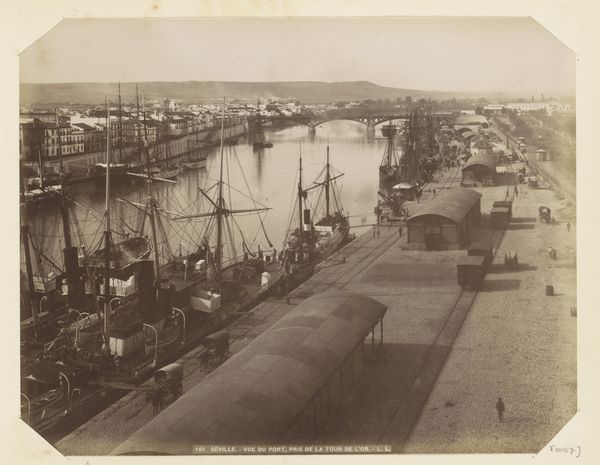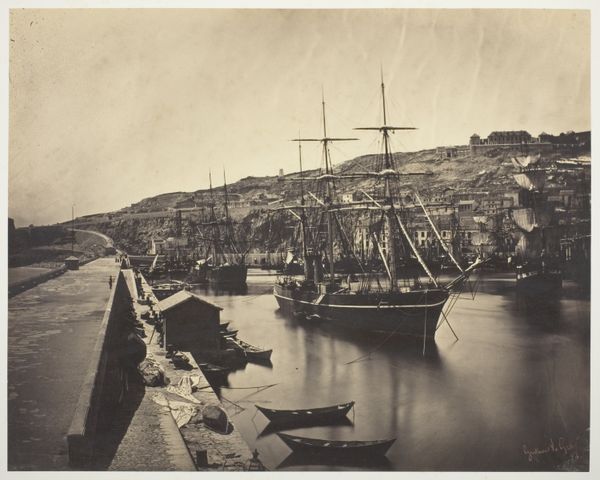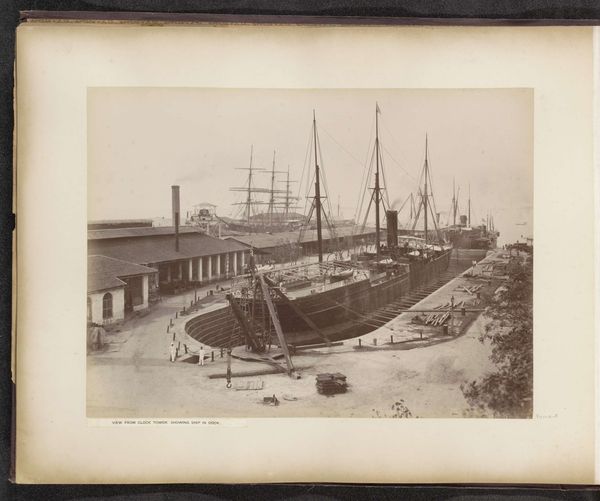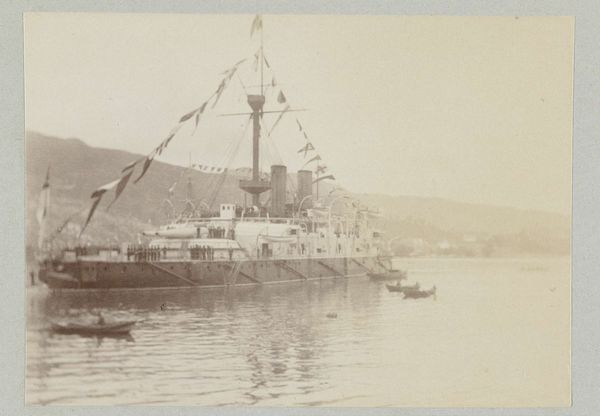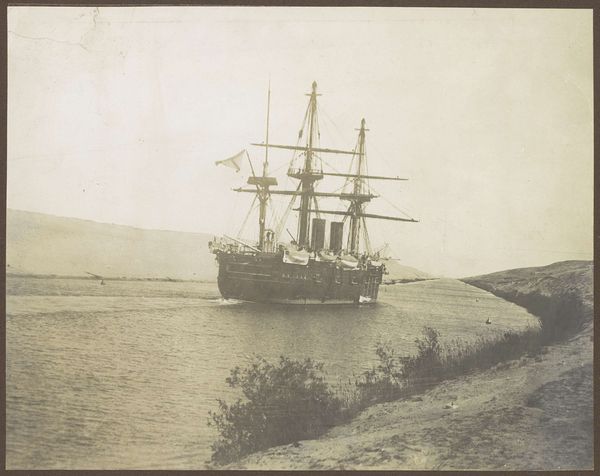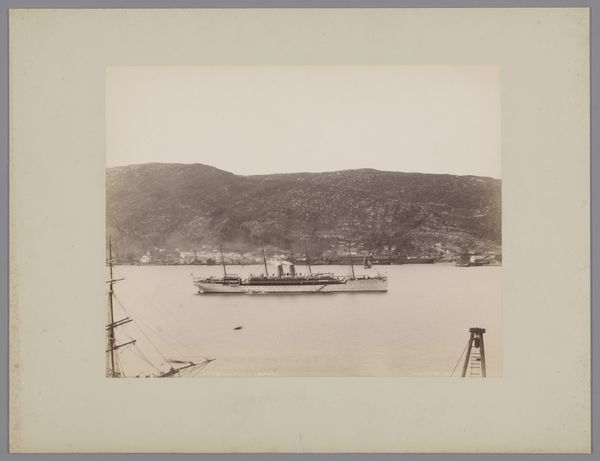
print, paper, photography
#
16_19th-century
# print
#
war
#
landscape
#
paper
#
photography
#
england
#
history-painting
#
realism
Dimensions: 20.7 × 25.3 cm (image/paper); 42.5 × 58.9 cm (mount)
Copyright: Public Domain
This is Roger Fenton’s “The Ordnance Wharf, Balaklava,” a photograph printed on paper. Fenton was among the first to document war, using the collodion process. This involved coating a glass plate with chemicals, inserting it into the camera, exposing the image, and then developing the negative—all before the plate dried! Look closely and you can sense how this arduous process dictated Fenton’s approach. He couldn’t capture action; only static scenes like this one of cannonballs, supplies, and ships at dock. The photograph’s tones are muted, not only due to the limitations of the medium, but also the landscape. The piled cannonballs speak to industrial production geared towards destruction, while the ships suggest global transport of materials and manpower. Fenton's images, though seemingly still, hinted at the rapid technological and political changes reshaping the world, underscoring the human cost of conflict. Ultimately, considering the materials, the making, and the context allows us to reflect on photography’s unique ability to capture a moment in time and reveal the complexities of history.
Comments
No comments
Be the first to comment and join the conversation on the ultimate creative platform.
